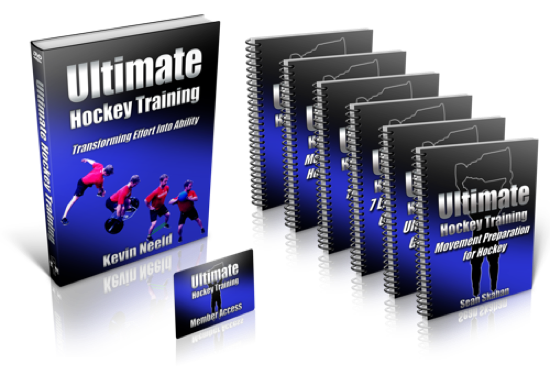I hope your new year is off to a great start. I’ve been extremely busy over the last two weeks balancing the Flyers junior team, all of our regular training clients, manual therapy clients, and working on a new project. We also had two new lacrosse organizations start with us, and Matt Siniscalchi and I have been testing all of the teams in a local soccer organization on top of everything else! It’s been a lot of fun, but I haven’t had nearly as much time to write as I’d like.
2014 kicked off by wrapping up the best of 2013. If you missed this series, you can check out the best articles, videos, and resources of 2013 at the links below:
Today I wanted to present a new body position I’ve been programming for a variety of exercises that helps isolate the core. As a quick aside, I don’t believe you can (or should try for that matter) really truly isolate a given muscle group in most cases. With almost every exercise, there is a lot of “behind the scenes” muscle activity and motor programming that occurs that some are only acutely aware of. For example, while this is common knowledge among powerlifting crowds (and bench press enthusiasts in general), many in the athletic world don’t realize that a significant proportion of the load you’re able to move in a bench press comes from having a proper leg drive. Even doing an exercise like a biceps curl, as I demonstrated in Ultimate Hockey Training, requires a coordinated pattern of stabilization activity to keep the scapulae (shoulder blades) from migrating forward as the weight is lifted. This, naturally, is in addition to all of the muscles that are working at a low level to maintain alignment throughout the rest of the body.
That said, “isolate” in this context is used more in terms of the movement availability than suggesting that only the core is working. If you’ve read Ultimate Hockey Training, you know I program a lot of core work (e.g. chop and lift patterns, and belly press variations) based on the position progression of: Half-Kneeling -> Tall Kneeling -> Standing.
The videos below may take a second to load, so please be patient.
[quicktime]http://kevinneeld.com/videos/Half-Kneeling%20Cable%20Lift.mp4[/quicktime]
Half-Kneeling Cable Lift
[quicktime]http://kevinneeld.com/videos/Tall%20Kneeling%20Cable%20Chop.mp4[/quicktime]
Tall Kneeling Cable Chop
[quicktime]http://kevinneeld.com/videos/Standing%20Belly%20Press%20Lateral%20Walk.mp4[/quicktime]
Standing Belly Press Lateral Walk
These positions progress the stabilization requirements at and below the pelvis. In a half-kneeling position, the primary pelvic stabilization need is in the sagittal plane (front to back movement). Simply, having one leg forward and the other leg back serves to almost “lock” the pelvis into place, and a simple cue of “stay tall” takes care of most of the rest. In a tall kneeling position, the activity necessary to keep the pelvis from rotating, laterally shifting, or flexing/overextending is greater than the half-kneeling position, but the feet/lower legs are taken out of the pattern altogether. In a standing position, all hands are on deck to help control optimal positioning.
Over this past season, we’ve had two players end up in a boot: one with a broken fibula and one with a high ankle sprain. In these situations, my thought process is “one area needs to heal; the rest of your body is trainable.” There are very few injuries I don’t feel comfortable training around, and lower leg injuries leave the overwhelming majority of the body that can and should be trained during the recovery process. There is a much different return to play timeline for a player that sits on the couch for 12 weeks while his leg heals and one that trains whatever he/she can throughout that duration, as they are drastically less deconditioned when their injury heals if they’re proactive about training. As I tell our players, there is a huge difference between “not hurt” and “ready to play”. Confusing these two as synonymous is one reason why players have prolonged recovery times and/or constant recurrences.
Referring back to the positions above, need to stay off of the one leg with a boot rules out the half-kneeling and standing positions. As a result, in addition to tall kneeling exercises, I’ve programmed several “long-seated” variations.
[quicktime]http://kevinneeld.com/videos/Long-Seated%20Belly%20Press.mp4[/quicktime]
Long-Seated Belly Press
[quicktime]http://kevinneeld.com/videos/Long-Seated%20Cable%20Lift.mp4[/quicktime]
Long-Seated Cable Lift
[quicktime]http://kevinneeld.com/videos/Long-Seated%20Alternate%20Kettlebell%20Overhead%20Press.mp4[/quicktime]
Long-Seated Alternate Kettlebell Overhead Press
These positions require a significant degree of core “stabilization” to create a solid base of support to allow for controlled upper body movement, as the hips are completely taken out of it. I also think there is value here in teaching people how to “center” properly above their hips. As with all of these variations, I don’t think one is better or worse than another, they each just have different emphases and may be more of less appropriate for any given individual than the others. In this case, the long-seated position offers another position to train a variety of exercise patterns while placing a greater emphasis on centering over the hips and using the core to create a stable base of support. If you’re looking for a little variety in your programs, give these a shot. You might be surprised how difficult they are!
The videos above are 3 of the 10 long-seated exercise variations and of the 30 new exercise videos we just filmed and will add to the already 800+ exercise video database available to Ultimate Hockey Training Insiders this week. Get access to quality hockey training programs and the largest hockey training exercise database available today for less than the cost of a skate sharpening and roll of tape here: Ultimate Hockey Training Insider
To your success,
Kevin Neeld
OptimizingMovement.com
UltimateHockeyTraining.com
Please enter your first name and email below to sign up for my FREE Athletic Development and Hockey Training Newsletter!
“…an extremely rare comprehensive look at the present state of ice hockey training.”
“…a must-have for coaches and strength professionals at all levels of hockey.”
